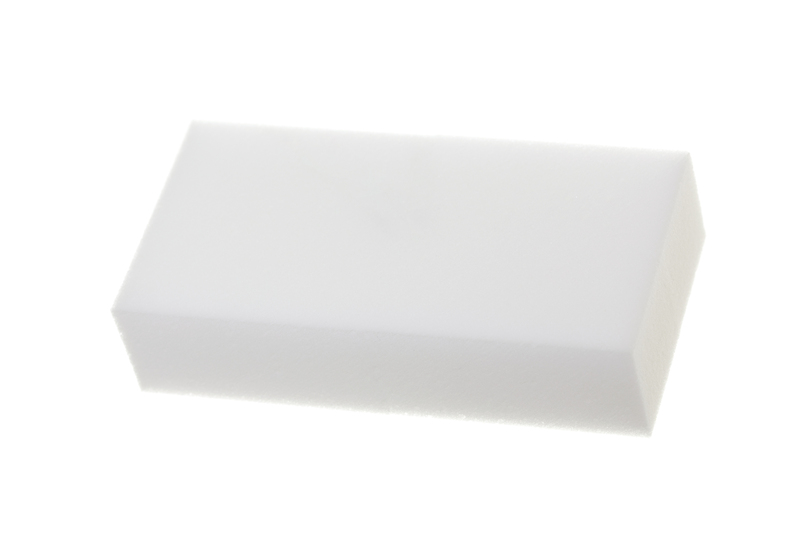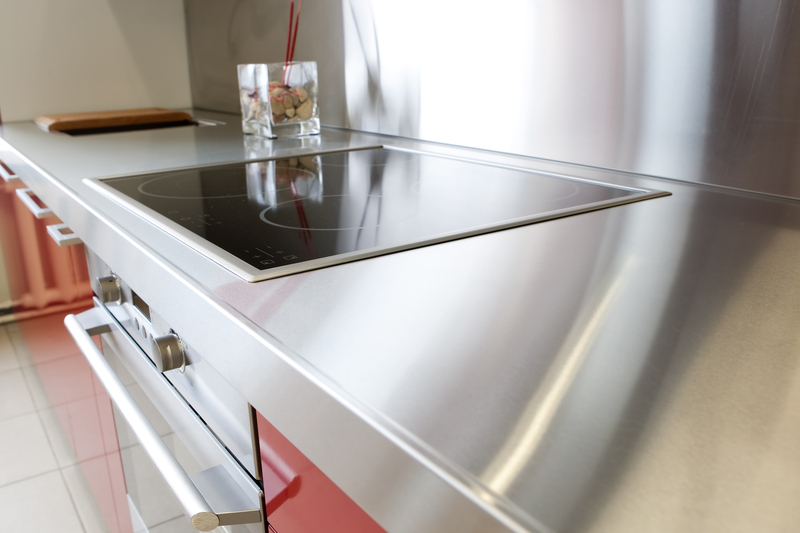Transform Your Bathroom into a Mold-Free Zone
Posted on 24/08/2025
Transform Your Bathroom into a Mold-Free Zone: The Ultimate Guide
Is your bathroom struggling with persistent mold? You're not alone. Bathrooms are a favorite breeding ground for mold, thanks to humidity, warmth, and frequent water exposure. Transforming your bathroom into a mold-free zone is possible, and this comprehensive guide will show you how. From identifying the causes to implementing practical prevention techniques, you'll learn how to create a clean, healthy, and inviting bathroom space.
Understanding Bathroom Mold: Why Does It Happen?
Mold is a fungus that thrives in environments with excessive moisture and poor ventilation, making bathrooms an ideal habitat. Mold growth in bathrooms is usually spotted on tiles, grout, ceilings, shower curtains, or even under sinks. Before you transform your bathroom to a mold-free sanctuary, it's essential to understand the root causes.
Common Causes of Bathroom Mold:
- Poor ventilation allows moisture to linger, creating an optimal environment for mold.
- Water leaks from pipes, faucets, or poor seals contribute to dampness.
- Inadequate bathroom cleaning allows spores to flourish and spread.
- High humidity, especially in small, closed spaces.
Identifying these sources is the first step towards eliminating bathroom mold for good.

Health Effects: Why a Mold-Free Bathroom Matters
Having a bathroom free from mold isn't just about aesthetics. Mold can wreck paintwork, create unpleasant odors, and even damage your property. More importantly, it poses potential health risks, especially for those with allergies, asthma, or respiratory conditions.
- Allergic Reactions: Sneezing, runny nose, red eyes, and skin rashes are common.
- Respiratory Problems: Mold spores can trigger asthma attacks or allergic reactions.
- Fatigue and Headaches: Long-term exposure can lead to more subtle health problems.
By transforming your bathroom into a mold-free zone, you protect your family's health and boost your home's value.
Early Detection: How to Spot Mold in Your Bathroom
Taking proactive steps begins with early detection. Mold isn't always visible; sometimes it hides behind tiles, in ventilation ducts, or beneath flooring. Here are key signs of mold growth:
- Musty Odor: A persistent earthy, damp smell indicates hidden mold.
- Discolored Patches: Dark spots on walls, ceilings, or grout lines are warning signs.
- Warped Surfaces: Peeling paint or warped drywall signals moisture problems likely associated with mold.
- Condensation: Constant condensation on mirrors and tiles points to high humidity.
If you notice any of these signs, it's time to take action and start your journey towards a mold-free bathroom.
Step-by-Step: How to Transform Your Bathroom into a Mold-Free Zone
Step 1: Improve Bathroom Ventilation
Proper ventilation is the foundation of preventing mold in your bathroom. Without sufficient airflow, moisture lingers, and spores thrive.
- Install or upgrade to a high-quality exhaust fan; run it during and after showers.
- Keep windows open when possible to circulate fresh air.
- Consider a dehumidifier for bathrooms without windows or consistent humidity control.
- Leave the shower door or curtain open after use to speed up drying.
Step 2: Tackle Leaks and Water Intrusion
Any standing water is an invitation to mold. To create a mold resistant bathroom, address leaks immediately:
- Check under sinks, behind toilets, and around bathtubs for water stains or drips.
- Replace worn-out caulking or grout in showers and around fixtures.
- Inspect your ceiling for signs of water damage from above.
- Ensure proper sealing around windows and doors.
Fixing leaks promptly can stop mold before it starts.
Step 3: Control Humidity
Aim for a bathroom humidity level below 50%. Here's how:
- Use a digital hygrometer to monitor moisture levels.
- Wipe down wet surfaces like shower walls and floors after use.
- Hang towels to dry outside the bathroom when possible.
- Use moisture-absorbing crystals or products in enclosed spaces.
By keeping the air dry, you make your bathroom an unwelcoming place for mold.
Step 4: Deep Clean Regularly
Routine cleaning is crucial for a mold free bathroom. Mold spores can stick to soap scum, skin oils, and grime.
- Scrub tiles, grout, and fixtures weekly with mold-fighting cleaners or natural alternatives like vinegar and baking soda.
- Disinfect bathroom surfaces, including sinks and countertops.
- Wash shower curtains and liners at least once a month.
- Don't forget corners, behind toilets, and under sinks!
Step 5: Use Mold-Resistant Materials
If you're remodeling or upgrading, choose mold-resistant products for your bathroom:
- Opt for mildew-resistant paint on walls and ceilings.
- Install non-porous tiles and waterproof grout.
- Pick solid surface countertops instead of wood or laminate.
- Use glass shower enclosures rather than curtains, if possible.
These materials can drastically reduce the chance of future mold issues.
Natural Remedies: Eco-Friendly Ways to Eliminate Mold
While commercial mold removers are effective, many contain harsh chemicals. Here are some green alternatives to keep your bathroom a mold-free zone.
- White Vinegar: Spray undiluted vinegar onto surfaces, let it sit for an hour, scrub, and rinse.
- Baking Soda: Mix with water for a gentle abrasive cleaner.
- Tea Tree Oil: Add a teaspoon to a cup of water, spray, and wipe.
- Hydrogen Peroxide: Use 3% solution directly on mold spots, wait 10 minutes, then scrub.
Regular use of these natural mold inhibitors can keep mold at bay without harming your family or the environment.
Expert Tips for Maintaining a Mold-Free Bathroom
Transforming your bathroom into a mold-free sanctuary is only the beginning. Consistent maintenance is key.
- Dry Off After Use: Quickly dry floors, walls, and corners with a towel or squeegee.
- Organize Your Space: Reduce clutter where water can collect or airflow is blocked.
- Avoid leaving shampoo bottles or loofahs on wet corners; use shelves or holders that allow proper drainage.
- Check Regularly for New Leaks or Dampness: Early detection is your best defense.
- Inspect Grout and Caulk: Promptly repair any cracks to block water seeping underneath.
When to Seek Professional Help
Some mold infestations require expert intervention, especially if mold spreads behind walls or covers extensive areas. If you experience recurring problems despite following preventive measures, consult a mold remediation specialist, particularly if:
- Mold covers more than 10 square feet.
- You suspect hidden mold within walls or under floors.
- Family members develop chronic health symptoms.
- You notice persistent musty odors even after thorough cleaning.
A professional assessment ensures your bathroom is truly mold-free and safe for use.
The Benefits of a Mold-Free Bathroom
- Improved Air Quality: Breathe easier without irritating spores in the air.
- Healthier Living Environment: Protect your family from allergies and illnesses.
- Increased Home Value: A fresh, clean bathroom appeals to buyers and renters alike.
- Long-Term Savings: Prevent costly repairs due to water and mold damage.
- Enhanced Aesthetics: A spotless bathroom is a joy to use and show off.
FAQs About Creating a Mold-Free Bathroom
How often should I clean my bathroom to avoid mold?
For a bathroom resistant to mold, aim for a deep clean at least once a week, with surface wipes and ventilation after each use.
What is the best bathroom cleaner for fighting mold?
A mixture of white vinegar and baking soda is cost-effective, eco-friendly, and very powerful. Commercial mildew removers also work well for severe cases.
Can I repaint over old mold stains?
Only after you've removed every trace of mold and allowed the area to dry completely. Use mold-resistant primer and paint for best results.
Do bathroom plants help reduce mold?
Certain plants (like Boston fern or English ivy) can absorb humidity and modestly improve air quality, but they're not a substitute for proper ventilation and cleaning.

Final Steps: Your Action Plan for a Mold-Free Bathroom
It's time to transform your bathroom into a mold-free haven. Here's your action plan, summarizing everything you've learned:
- Assess your bathroom for existing mold, moisture, and ventilation problems.
- Fix leaks and upgrade ventilation systems immediately.
- Embrace regular cleaning routines, using both commercial and natural anti-mold products.
- Choose mold-resistant materials for any renovations or upgrades.
- Monitor the area for signs of recurring moisture or mold buildups.
- Stay proactive: Prevention and early detection are your best tools for a mold-free bathroom.
Start today, and you'll enjoy a fresh, healthy, and sparkling bathroom for years to come. With the right knowledge and habits, a mold-free bathroom is well within your reach!
Transform Your Bathroom into a Mold-Free Zone - Take Control Now!
Don't let mold dampen your mood or damage your home. Follow this ultimate guide to enjoy a cleaner, safer, and healthier bathroom. Transform your bathroom into a mold-free zone and reap the benefits for your home, health, and peace of mind!



